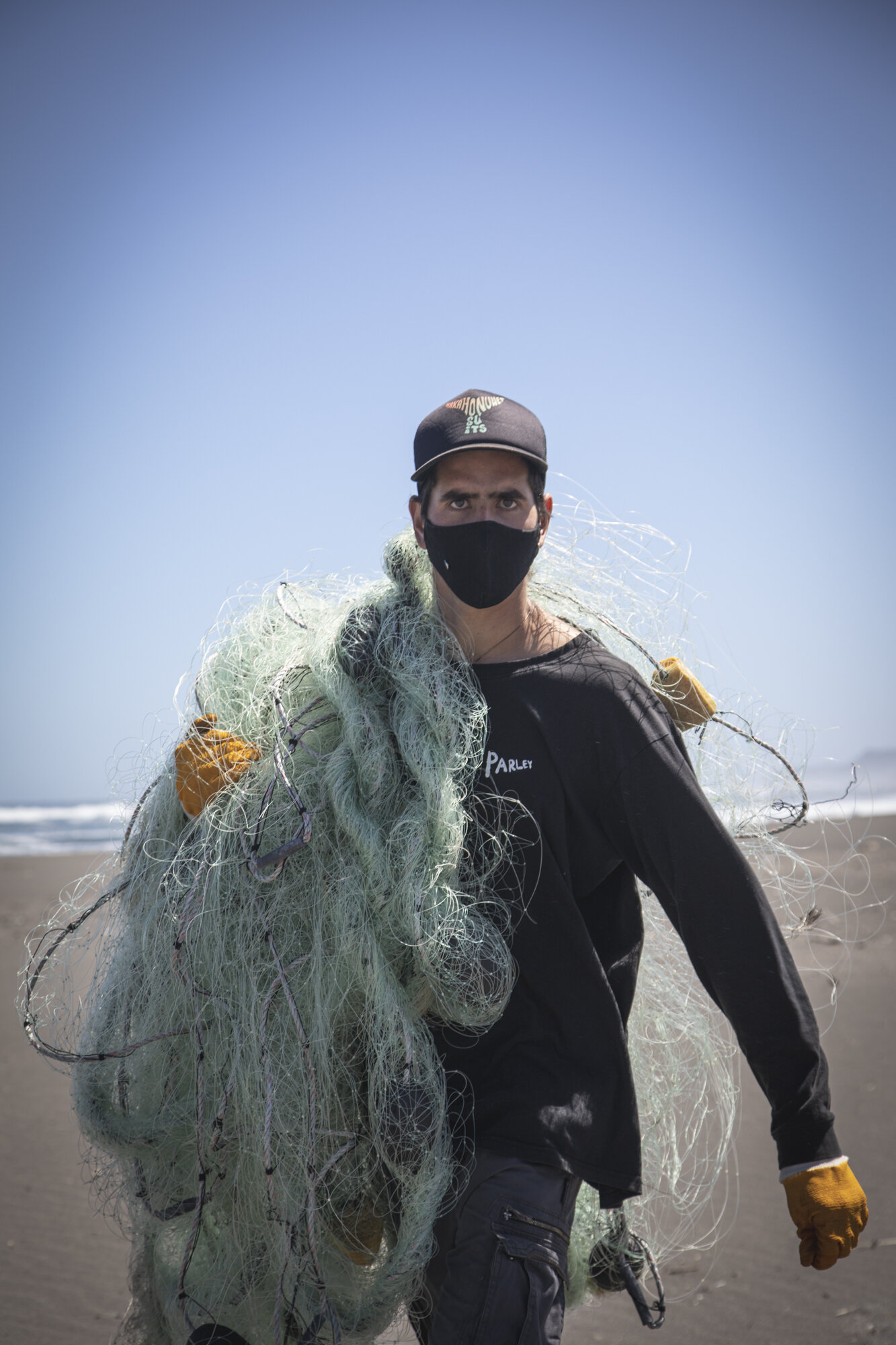INTERVIEW: PARLEY
Seeing seagulls fight over MacDonald's french fries in a parking lot might be the cheekiest sign that animals can adapt to the present day. What’s less funny is seeing chicks tangled in face masks, sharing fag butts, or not being able to digest their plastic-based diet. We’ve seen the photographs and videos online, the turtles entangled in discarded fishnets, or that one with a straw stuck up its nostril, we’ve seen the shopping bags and the six-pack rings floating around: they’re all evidence that our oceans are hurting /
To Cyrill Gutsch, this isn’t new news. Nearly a decade ago, he was told so by Sea Shepherd captain Paul Watson who, at the time, was being depicted as some sort of pirate. He was imprisoned on German soil for allegedly violating a Costa Rican ship at sea, a ship which was catching sharks, cutting their fins off and dumping the rest of their finless body overboard — which thank God, given the barbaric nature, is forbidden by law. “Knowing that he got arrested for actually doing good, I couldn’t let that go,” says Cyrill. He went to visit him in some law firm office and was then informed about the alarming state of our oceans. Right away he felt the need to speak up or, rather, as the French say, to parler. And that’s how Parley for the Oceans was born.
When the collective network was founded in 2012, shark finning and other destructive fishing practices weren’t much talked about (there was no Netflix’s Seaspiracy). So Cyrill focused on cleaning up the plastic-soup-of-an-ocean we’ve made to make a real, big impact and spread the word. With his team he developed Ocean Plastic®, a range of alternate materials made from plastic waste recycled from beaches, islands and coastal communities before it hits the sea.
Now of course, if the goal is to clean up the plastic from the oceans altogether, one could argue that upcycled plastic remains plastic, and could just as well end up being thrown back in the ocean. And this is something which Cyrill is very aware of. He refers to plastic as a design failure, saying: “There’s always something wrong with it. It’s leaking chemicals, it’s shedding micro particles, it’s giving off things we don’t want our nature, our bodies to be exposed to. It isn’t fit for a circular economy.”
“But this is not for the long term, It’s a band-aid solution.”
While marine and overall plastic pollution won’t be solved overnight, what Cyrill has done has brought mass attention to this issue. By getting big names on board such as adidas who, since 2015, has made Ultraboosts from Ocean Plastic® yarn, it’s forced other companies and us as consumers to at least acknowledge that the design of most of today’s products is downright out of touch with nature. Stella McCartney, American Express and Corona — the beer company, just to clarify — also partnered up with Parley.
Another industry player that’s just recently looked into it is Dutch textile innovation studio and manufacturer BYBORRE. Parley’s yarn is, according to Matthijs Loriaux, a member of the brand’s press team, “no different than any other polyester yarn in terms of quality and can be used to create textile just as well as any other one could,” he says in an email. Given this, designer Borre Akkersdijk engineered a knitted textile with the upcycled yarn for his private label’s upcoming collection “Edition9” which is set to release this autumn.
And now through the manufacturer's custom textile design platform Create™, they are making said recycled yarn available to creators who’d like to make their own textile. “There’s more to this capsule than meets the eye. It stands as a tangible symbol of change that hopefully will inspire fellow designers and manufacturers to challenge the status quo, and bring them to question their material choices and methods of manufacture,” says Matthijs.
This is as near to circularity as a design made from synthetic fiber can be. And while it’s a step in the right direction, again, Cyrill knows that the real sustainable solution lies in something else entirely: biofabrication. Hence why he’s linked up with Biofabricate, a platform run by Suzanne Lee that gathers biotech innovators, to hold an annual conference where biotech startups can talk solutions. “From living organisms we can now grow materials, and some of them are to replace what we’re currently sourcing from petrochemicals,” Suzanne tells us. “Mycelium, bacterias, yeasts, algae, all these kinds of living organisms can actually grow fibers and takeaway containers, for example.”
The beauty of this is that some of them can naturally be broken down and bio-digested. Clothing, but also packaging could thus become biodegradable and replace the real bad guy altogether: styrofoam.
“It’s got to be the nastiest, most toxic thing that won’t disappear under any circumstances, and for thousands of years,” Suzanne says about the man-made failure that is styrofoam. Yet she points out that mycelium packaging, for one thing, is compostable and so won’t pollute the soil or water sources if discarded. And while there’s no such thing as a perfect design solution to overproduction and, as a consequence, pollution (besides producing less, of course), in that particular case, “there’s no downside to it, really,” she says.
With Ocean Plastic® Cyrill’s trying to stop plastics from getting dumped into the sea, and with these conversations, he and Biofabricate’s Suzanne and the startups and investors that attend dare to explore a future beyond our addiction to plastic. “Negligence has to be left behind,” Cyrill says.







